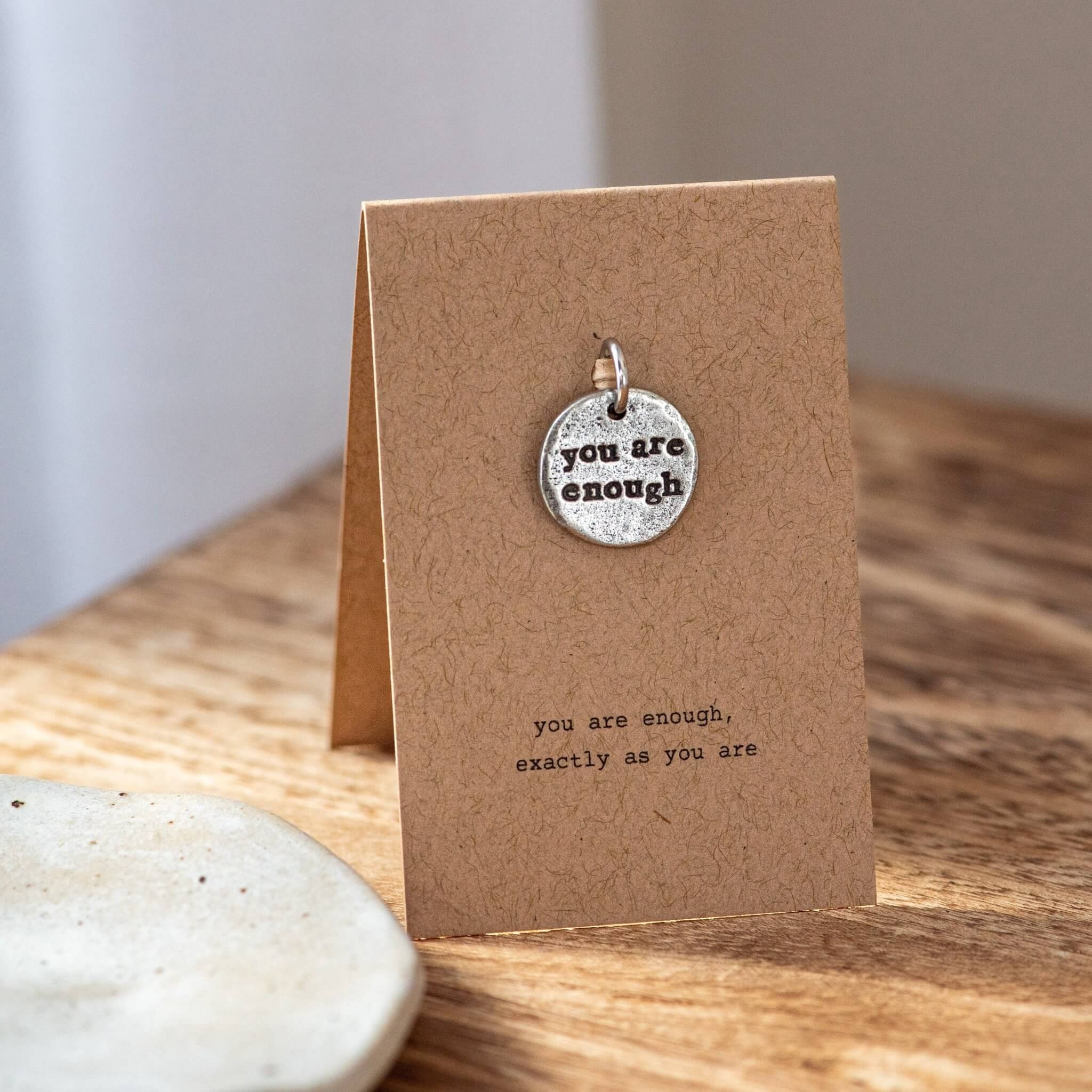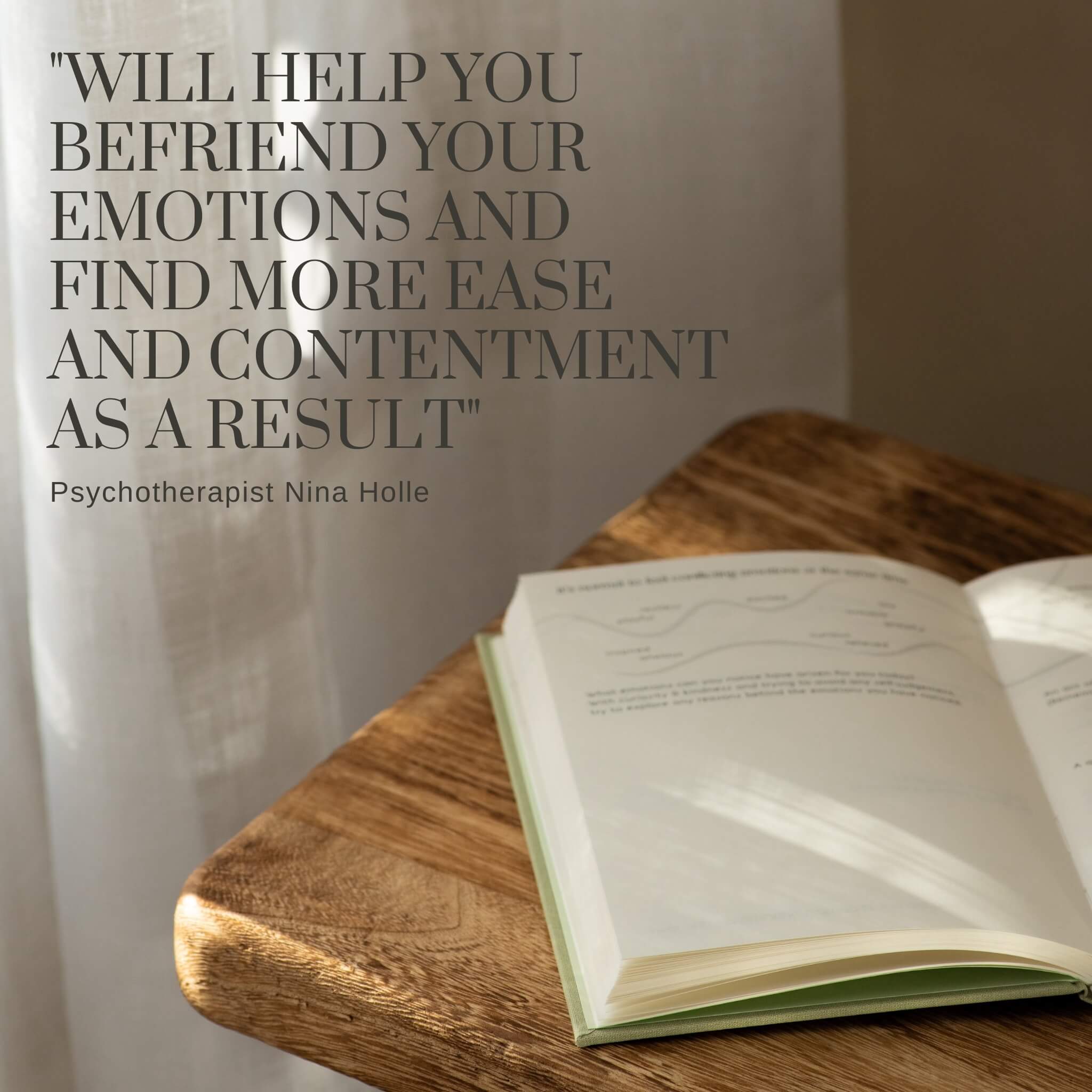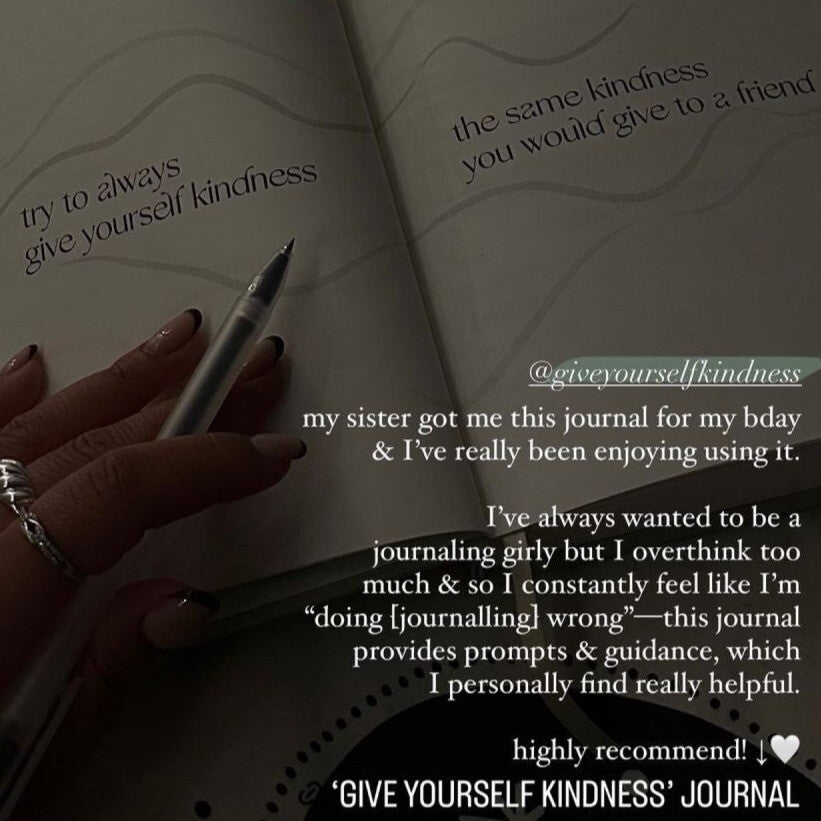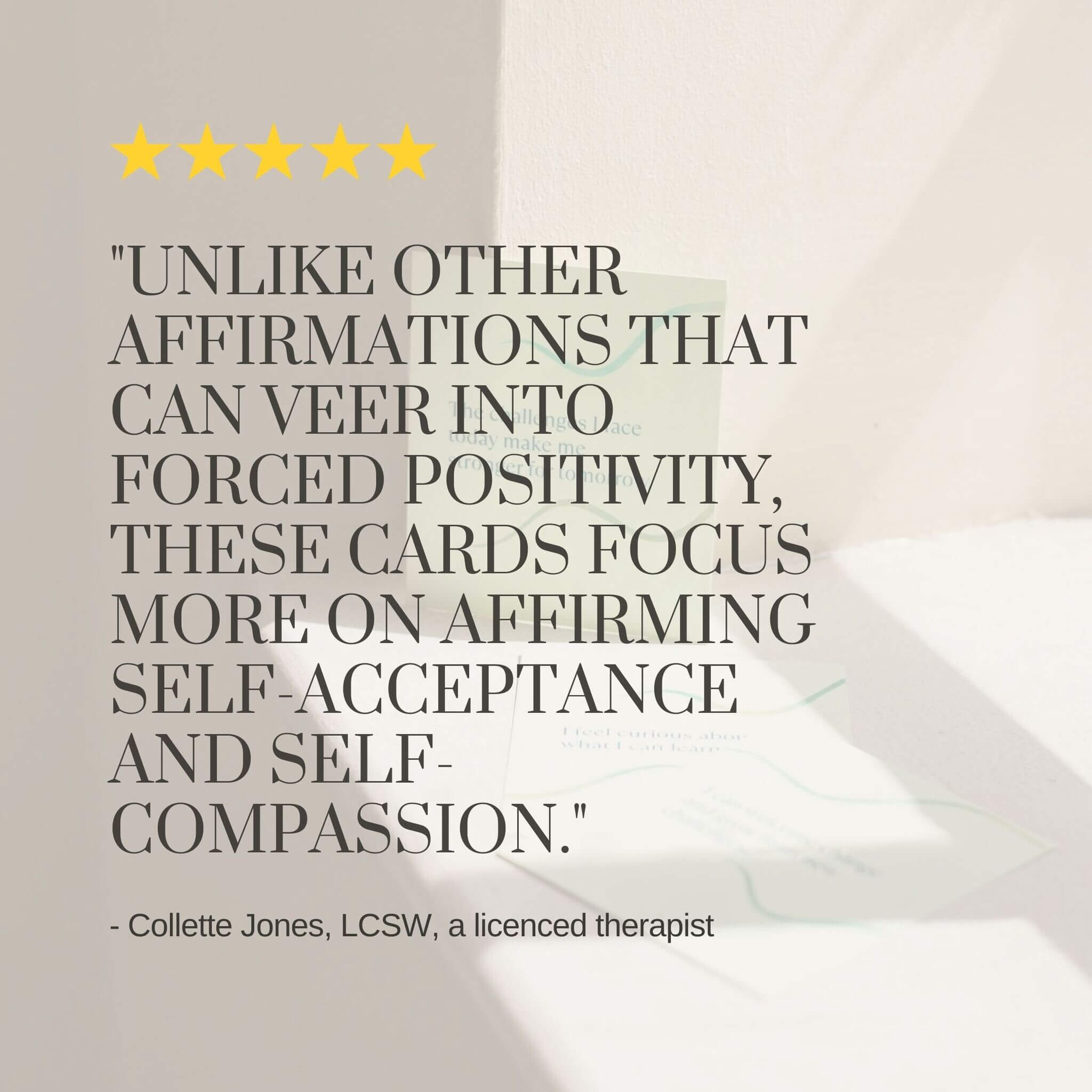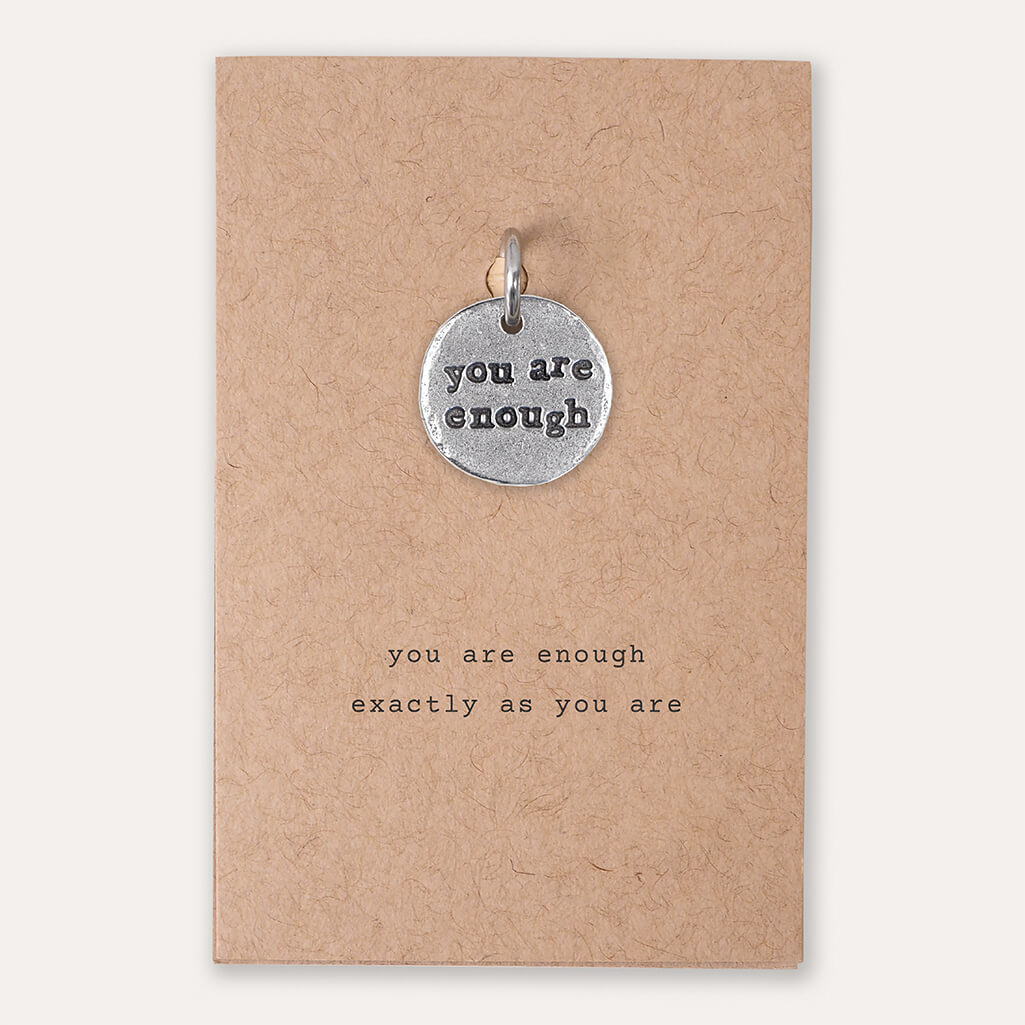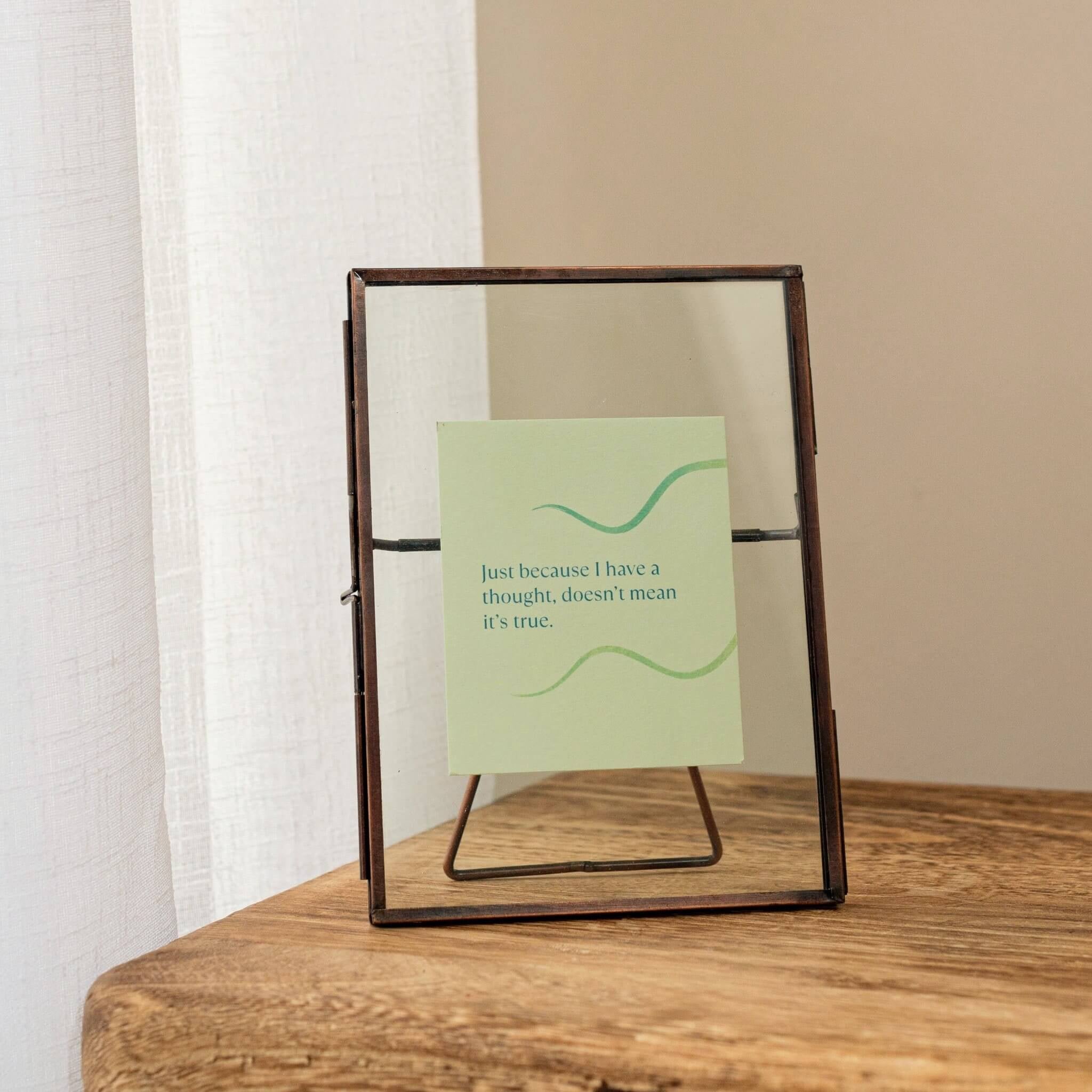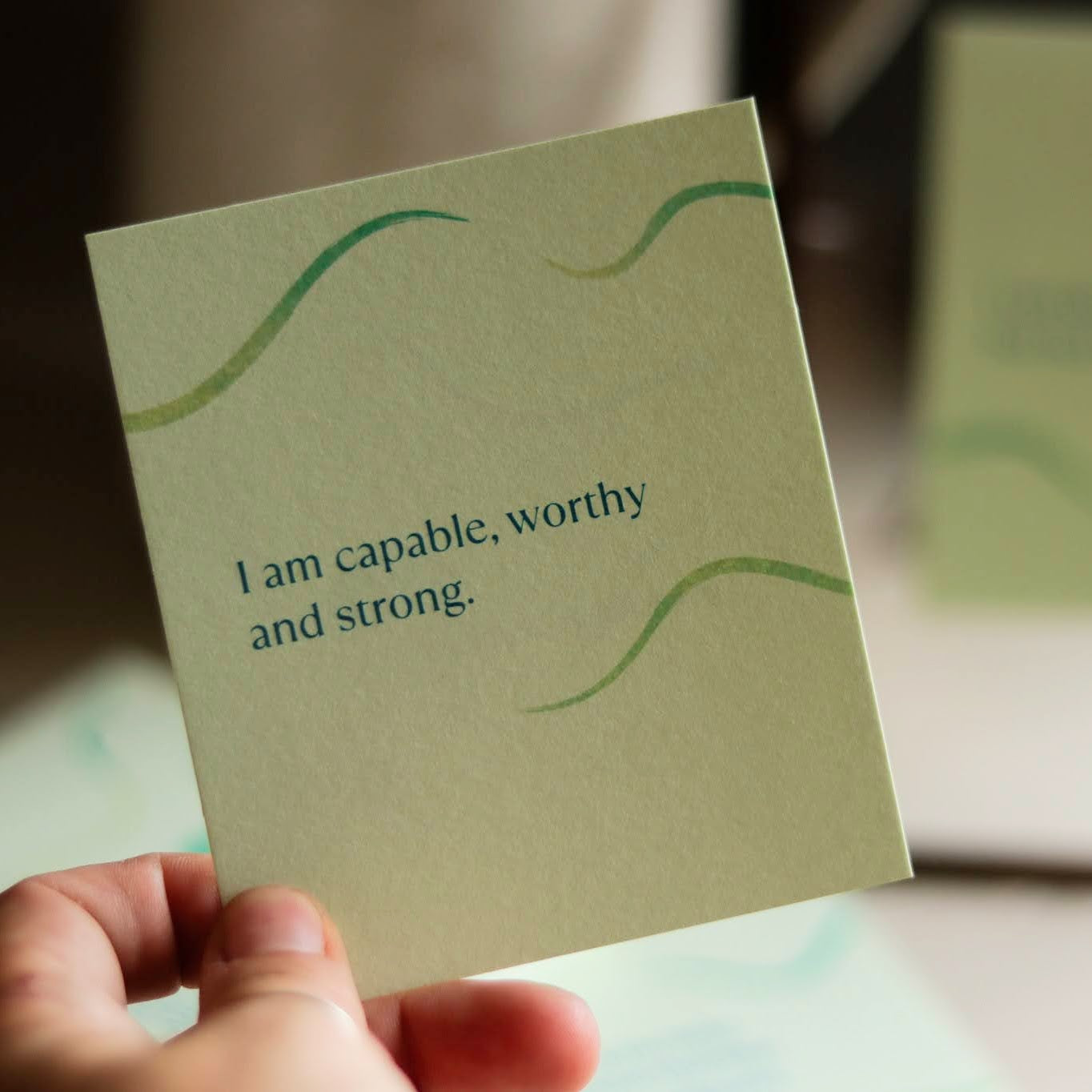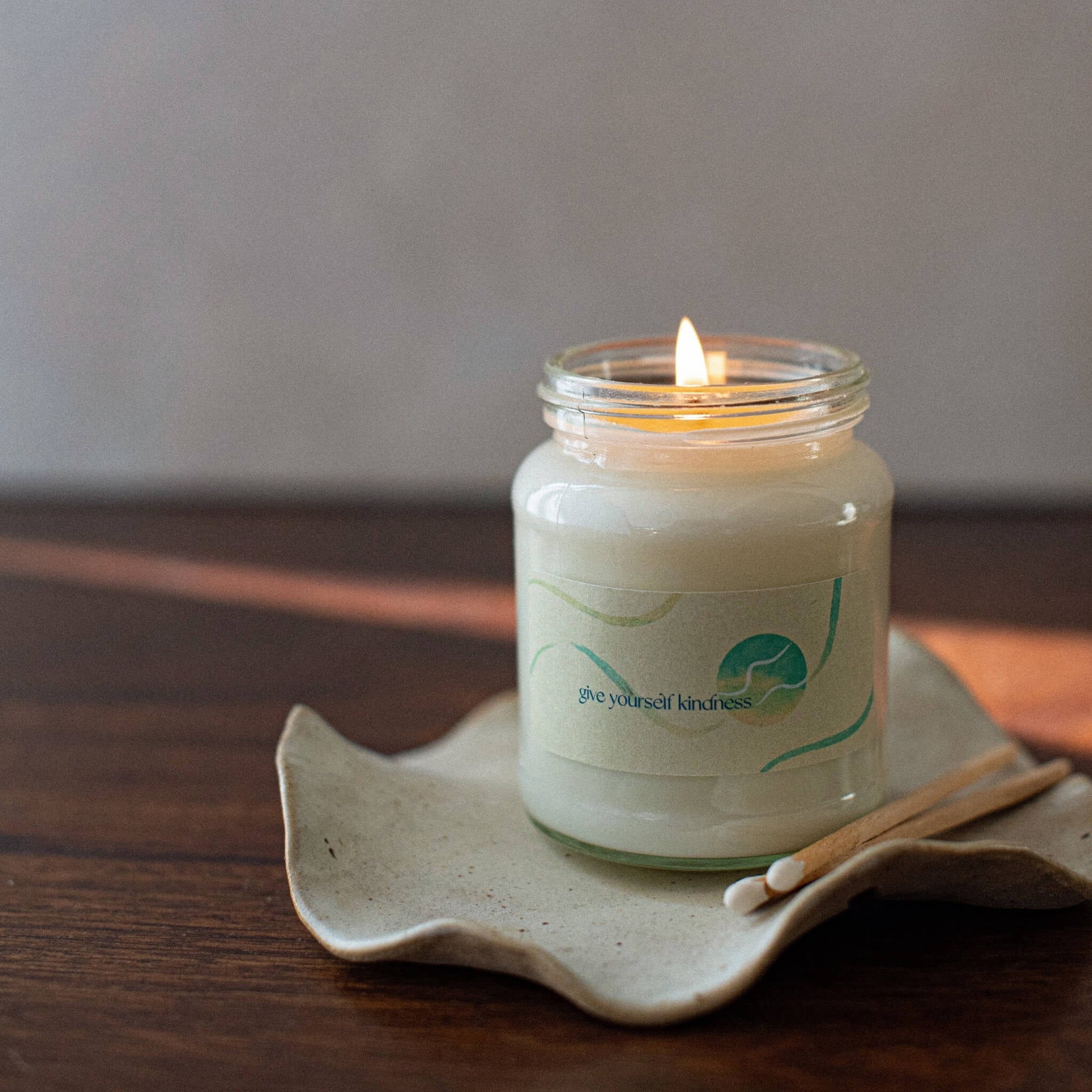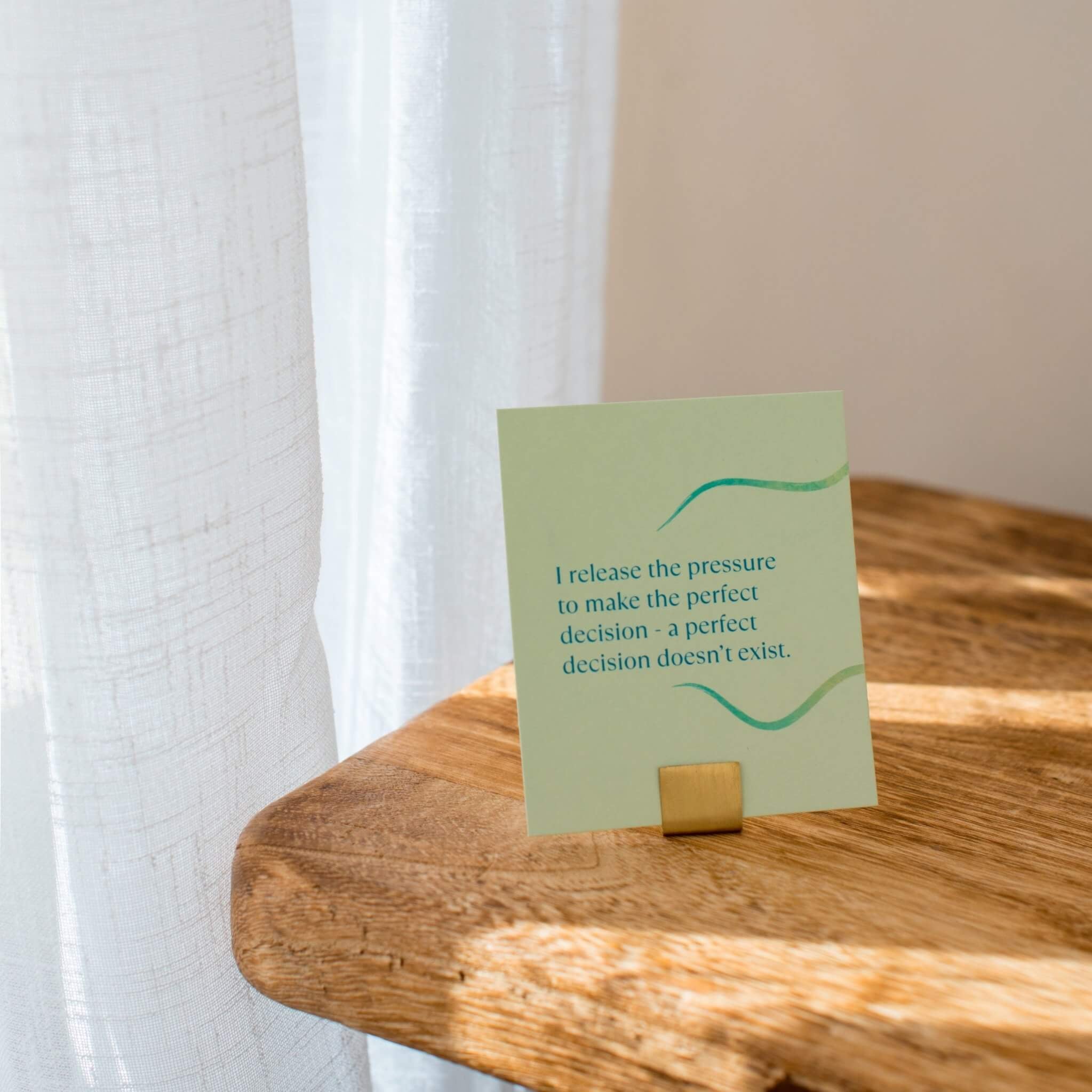written exclusively for Give Yourself Kindness by Joanna Townsend, LCSW, a licensed psychotherapist who has psychological interests in eating disorders, emotional regulation, self-worth, and compassion work.
Self-compassion is non-negotiable
Self-compassion is non-negotiable when it comes to our mental health. It supports our nervous system regulation, our perspective on struggle and vulnerability, and it helps us connect more meaningfully with ourselves and one another.
If you intellectually understand self-compassion but find self-compassion hard in practice, you’re not alone.
Self-compassion is a skill that we can learn
Self-compassion is a language, a skill, a process. It’s something we often have to learn.
Most of us weren’t raised in an environment of compassion. Instead, the familial modeling we received and the cultural language we took on was more akin to criticism and shame.
'Self-compassion is a language, a skill, a process'
Fortunately, like most skills, practice can help build fluency. With intentionality and repetition, self-compassion can become more accessible to you.
Need a few places to start? Here are five ways to practice self-compassion.
1. Drop the judgment
We’re so quick to judge ourselves. For mistakes we make, for things we say, do, and feel.
Our self-judgments can come from many roots, not limited to rigid expectations we hold, beliefs we’ve internalized about ourselves, comparison, perfectionism, and past experiences.
Integrating self-compassion into your relationship with yourself means recognizing and letting go of judgment.
We all have our own journeys filled with hard lessons, growth edges, and liberating realizations. Judgment and criticism often go hand-in-hand.
So while they are part of all of our psyches, learning how to temper them is essential. When we build awareness, we can respond instead with kindness and compassion.
Noticing judgmental thoughts and their assumptions
Practicing dropping judgment involves noticing judgmental thoughts and their assumptions.
What types of judgments do you tend to attach to?
What thoughts do you have when your critical spiral starts?
How do you feel about the things you’re judging yourself on?
What would it look like to be more gentle with yourself—to allow yourself the warmth and care you may offer someone else in your shoes?
For example, having anger doesn’t make you an angry horrible person, making mistakes doesn’t make you a failure, and having a hard time doesn’t mean you’re not enough.
Challenging these quick generalizations and self-attacks through psychological flexibility is important.
Judgment blocks us from accessing our emotions and perpetuates feelings of shame and blame. Compassion, on the other hand, helps us move through difficult moments and strengthens resilience.
2. Validate your feelings
Our emotions tell us a lot. They hold information, internal wisdom, and important cues about our experiences.
The emotion that you feel is valid
Some feelings are pleasant and uplifting. And others can be uncomfortable and distressing. Adopting a lens of self-compassion with our emotions means validating what we’re feeling.
We don’t have to fully understand why we may be feeling a certain way to validate and affirm that it’s what we’re feeling. The more we validate our emotions, the more in touch we become with our inner selves. Understanding and exploring can come later.
'We don’t have to fully understand why we may be feeling a certain way to validate'
Having compassion through validating our feelings can look like feeling a clench of sadness and dropping into our body as you remind yourself that it’s okay to be feeling down.
Before you go into analyzing what you may be feeling sad about and all the things you can do to not feel sad, use self-compassion to honor and normalize your experience and the subtle, sensitive, and strong emotions that come with being human.
Put a hand to your chest or close your eyes for a brief moment as you offer yourself a gentle reminder that your feelings are valid.
3. Invite connection
Connection and compassion work together in a few ways. Compassion can help us connect to our surroundings, others, and ourselves. And, connection can help us offer more compassion to ourselves and those around us.
'connection and compassion work together'
If learning the language of self-compassion feels fake or inauthentic (a common complaint!), you may benefit from connection, first.
How does the emotion you are experiencing feel?
This can be in the form of connecting to your body. Learning how to feel and experience emotions and sensations within yourself.
Practice naming feeling words, paying attention to temperature changes, tightness or openness—anything that feels accessible and safe for you to identify.
See what it’s like to experience that internal sensory information and allow whatever arises to be there, without changing, forcing, or judging it.
'allow whatever arises to be there, without changing, forcing, or judging it'
You can also do this same practice with external sensory information. Tune into your environment and connect with how you feel in the spaces you occupy.
Maybe that’s walking barefoot in the grass and paying attention to what that feels like on your toes, soles, and ankles. Or looking upward at the trees, blooms, the color of the sky, the smell of the air on a slow walk.
'we can cultivate compassion and presence'
By attending to our body and our felt experiences, we can cultivate compassion and presence. You may notice you have more capacity for empathy and kindness when you are connected and embodied compared to when you are stuck in mental loops and disconnected from your body.
This is well explained by nervous system research and the neurobiology of sympathetic vs parasympathetic states on our ability to feel connected, curious, compassionate.(i)
4. Acceptance
Self-acceptance is an avenue for self-compassion because it involves embracing all aspects of ourselves. It means seeing ourselves as whole and worthy even in the face of setbacks, perceived imperfections, and struggle.
You are whole and worthy now, and this will never change
Acceptance is about giving ourselves permission to be where we are while also being allowed to change and grow.
However, without the foundation of self-acceptance, we’ll often find our self-worth tethered to external accolades, achievements, and seeking approval from others.
Psychologist and the founder of humanistic psychology, Carl Rogers once wrote,
“The curious paradox is that when I accept myself just as I am, then I can change.”
This famed quote speaks to the power of acceptance.
Acceptance isn’t about resignation or complacency, but rather seeing ourselves as deeply and authentically human and worthy of love—regardless of who we have been and where we are now.
'Acceptance isn’t about resignation or complacency'
Acceptance is a tool towards self-compassion because of its quality of unconditionality. Accepting ourselves, our emotions, our experiences, our strengths, and our weaknesses as we are helps us soften into compassion.
From there, we can use curiosity and openness to connect to our values and our growth areas. With unconditional acceptance comes unconditional compassion.
We can then evolve as an expression of our abundance and wholeness, instead of seeking fulfillment out of a mindset of deficit.
5. Self-care
When we’re burdened by criticism or self-flagellation, our routines and habits reflect that.
Sometimes that can present as abandoning them because we don’t feel worthy of care. We may find ourselves in an avoidance-procrastination loop.
Our fear responses can also look like hyperperformance as a way to seek approval or as a manifestation of self-punishment.
Self-compassion in action
Self-care can help us break out of cycles because it’s self-compassion in action. It’s a way to nurture ourselves and see our needs as worthy of tending to.
Whether that’s through rest, sleep, boundaries, movement, gratitude, nourishment, or connection, self-care nudges us in practicing kindness and compassion towards ourselves. Self-care is an extension of the compassion we can cultivate for ourselves.
The 'why' behind our self-care
A helpful way to check-in with our self-care “why” is exploring what we’re looking for from it.
'It’s also not always fun or glamorous'
Self-care, in its truest form, offers us connection with ourselves. It’s also not always fun or glamorous. Sometimes it’s making a hard choice to show up for ourselves like setting a financial boundary, committing to the therapy appointment you want to cancel, or expressing something that bothered you to a loved one instead of holding your feelings in.
The Give Yourself Kindness Journal can help you with just that. Through journal prompts, affirmations, and reflections, you can practice self-compassion by building self-caring habits.
'let your relationship with your self-care be flexible and everchanging'
Just like many of the practices here, let your relationship with your self-care be flexible and everchanging. Notice, get curious, and shift when needed.
Self-compassion: a language, a skill, a process
Remember that we don’t arrive at a place of everlong self-compassion. It’s something that requires upkeep and coming back to, time and time again.
'Every mistake is another opportunity to learn about ourselves'
Hopefully these five starting points support you. And don’t forget to be compassionate on your self-compassion journey. Every mistake is another opportunity to learn about ourselves and where we go in times of stress or strain.

Joanna Townsend, LCSW, is a licensed psychotherapist in Montana. She has psychological interests in eating disorders, emotional regulation, self-worth, and compassion work. Joanna holds a Bachelor's in Psychology from UNC-Chapel Hill & a Master of Social Work from NYU. Outside of private practice, she offers group work and psychoeducational resources on mental health topics. When she's not in the therapy room or creating, you can find her climbing, hiking, reading thrillers, and being a plant mom.
https://www.joannatownsend.com/
(i) 1. Neff, K. D., & Dahm, K. A. (2015). Self-compassion: What it is, what it does, and how it relates to mindfulness. In B. D. Ostafin, M. D. Robinson, & B. P. Meier (Eds.), Handbook of mindfulness and self-regulation (pp. 121–137). Springer Science + Business Media. https://doi.org/10.1007/978-1-4939-2263-5_10 2. Porges, S. W. (2011). The polyvagal theory: Neurophysiological foundations of emotions, attachment, communication, and self-regulation. W W Norton & Co.







